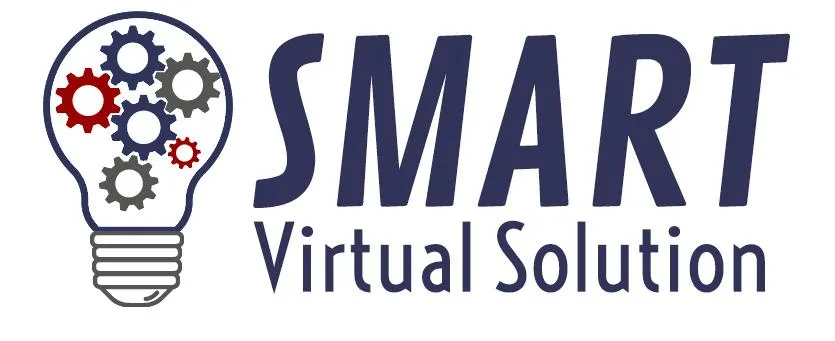
Why “Clear” Beats “Clever” in Marketing
You know that feeling—you sit down to write a follow-up, update your website, or send out a message to your audience... and suddenly you feel the pressure to “make it sound good.”
So you get clever. You get creative.
You say things like:
“Empowering entrepreneurs to unlock their impact through aligned strategy.”
Or:
“Empowering social conscious entrepreneurs to step into aligned abundance”
And then you sit back and wonder…
Wait, what do I actually do again?
It happens to the best of us—including me.
When I Got Too Clever
A while ago, I worked with my trusty AI assistant to generate copy for one of my offers. The AI got cute. It started adding puns. My sales page for a tech offer turned into something about spells and wizards. It was clever. It was fun.
I called it the Tech Wizard package.
It had sparkles and everything. ✨ You might have even seen it.
And for a minute, I was proud of it.
But a few days later? I was embarrassed to send people there.
Not because it was wrong—because it wasn’t me.
It was clever, but it wasn’t sustainable.
I couldn’t remember how I explained it.
And worse—I couldn’t see myself showing up with confidence around it.
That’s why I’m such a big believer in what I call down and dirty marketing.
What Is “Down and Dirty Marketing”?
It’s not about being messy or unprofessional.
It’s about being clear, human, and done.
It’s:
Saying what you do in plain language
Writing like a real person
Sending the email even if the formatting isn’t perfect
Choosing clarity over cleverness every single time
And it works. Because people aren’t looking to be impressed.
They’re looking to be understood.
Why Clear Messaging Wins (Statistically Speaking)
Here’s something most people don’t realize:
The average U.S. adult reads at a 7th to 8th grade level, and many operate comfortably around a 5th grade level—especially when scanning online content or email.
And yet, so many business owners try to sound like academic experts or brand agencies instead of just saying:
“I help people book more calls.”
“I build websites for local businesses.”
“I teach you how to stop ghosting your email list.”
If your audience has to stop and interpret your message, you’ve probably already lost them.
Clear isn’t just kind.
Clear is strategic.
Where Clarity Matters Most
Let’s bring it back to a few places we’ve already covered:
💬 1. Follow-Up Emails
In Week 3, (What's Hiding in Your Follow-Ups?) we talked about how many leads open your emails—but don’t reply.
Sometimes that’s because they’re unsure what you’re asking them to do.
Your follow-up sequence should always answer the question:
“What happens next, and why does it matter to them?”
Don’t hint. Say it plainly.
🤝 2. Networking Follow-Ups
In Week 2, (What to Say After a Networking Event) we laid out what to say after meeting someone new.
That’s the last place to get clever or mysterious.
Tell them:
What you do
Who you help
How to get in touch
Your words should rebuild the connection, not require a decoder ring. If you can’t say it in a sentence or two, it’s time to clarify—not complicate.
Is This You? A Quick Check
Here are a few examples of clever vs. clear copy to help you gut-check your own language:
Instead of:
“Helping purpose-driven professionals thrive through aligned energetic leadership…”
Try:
“I coach business owners to manage stress and make confident decisions.”
Instead of:
“Designing transformative visibility ecosystems for creative visionaries…”
Try:
“We help creatives get found online with websites and email marketing.”
Instead of:
“Empowering aligned growth through strategic transformation…”
Try:
“I help service providers organize their backend and automate follow-up so they can grow without burning out.”
You don’t need to be flashy.
You need to be remembered.
🎯 Bonus: Use This AI Prompt to Simplify Your Message
Here’s a prompt to run in ChatGPT (or wherever you write):
I’m trying to describe what I do in a way that’s clear and easy to remember.
Right now I say: “[insert your current description]”
Can you rewrite it so:
– A 12-year-old (or someone reading at a 6th grade level) could understand it
– It’s friendly and professional
– It clearly explains what I do and who I helpAlso: give me 2–3 options I could use in an email signature or website headline.
Use this anytime you feel stuck trying to “say it the right way.”
Clear > Clever. Always.
Final Thought
You don’t need the most impressive brand language.
You don’t need a tagline that makes people think.
You don’t need a Tech Wizard landing page with sparkle emojis. (Trust me.)
You need a message you can say out loud.
You need a message your audience understands right away.
You need marketing that’s down and dirty—simple, useful, and done.
So the next time you're tempted to sound clever, pause.
Ask:
“Would someone who just met me know what I do and how I can help?”
If the answer is no—go back and make it clearer.
Clarity gets you booked.
Clever gets you ignored.
📬 Want more clear, strategic tips like this every week?
Subscribe to the Smart Business Boost newsletter here:
👉 smartvirtualmarketing.com/blog
Or book a Smart Power Hour if you're ready to ditch the overwhelm and map out a system—with words that work.

